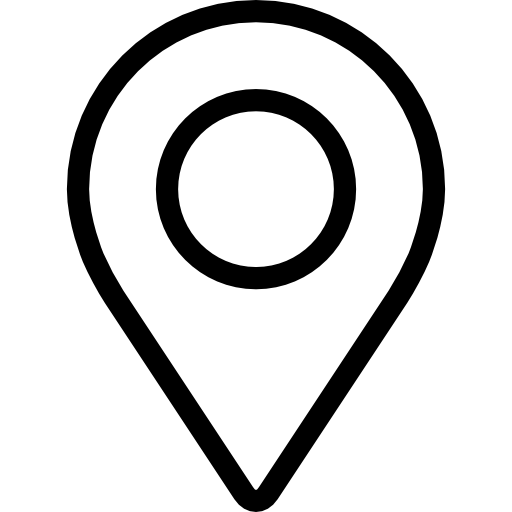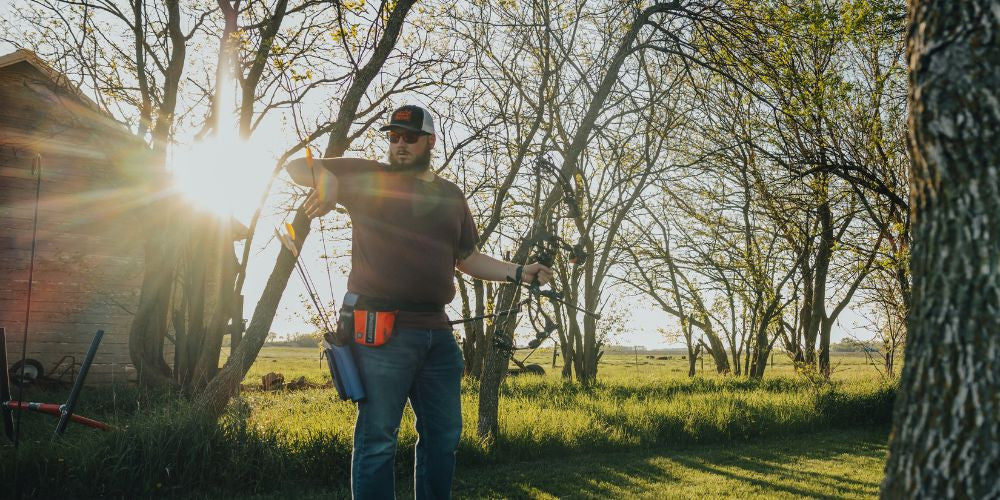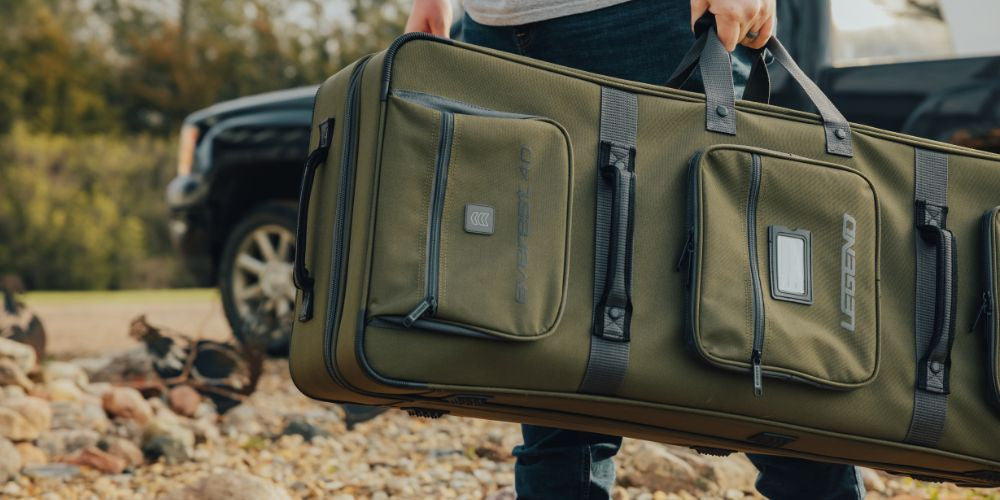Archery is an intricate sport and requires a lot of skill and patience to accurate shooting. It is a physically and mentally challenging activity that requires the archer to be precise and accurate in their movements. One of the most common problems that most archers face is hitting their arm when shooting. This can be a painful and frustrating experience for new and experienced archers alike, especially if it affects your accuracy. However, with the right adjustments and techniques, you can prevent hitting your arm and enjoy archery without any discomfort.
Consequences Of Hitting Your Arm When Shooting
There are a number of consequences that can result from hitting your arm when shooting. These include:
Pain and Discomfort
When the bow string hits your arm, it can cause sharp pain and discomfort, which can be especially intense if you're shooting at a higher draw weight or draw length. The pain can last for several minutes or even hours and can make it difficult to continue shooting or to perform other activities that involve your arm.
In addition to pain, hitting your arm can also cause bruising, swelling, and redness on your forearm. These symptoms can be mild or severe, depending on the force of the impact and the sensitivity of your skin.
Effect on Accuracy

Hitting your arm when shooting can also affect your accuracy and consistency. When you anticipate the impact of the bow string hitting your arm, you may involuntarily flinch or move, which can cause your shots to be inconsistent and off-target. Over time, this can lead to frustration and a loss of confidence in your shooting abilities.
Long-Term Injuries
Repeatedly hitting your arm when shooting can also cause long-term injuries, such as nerve damage or tendonitis. Nerve damage can cause numbness, tingling, or weakness in your arm, while tendinitis can cause inflammation and pain in your tendons. These injuries can be especially problematic if you're an avid archer, as they can make it difficult to continue practicing or to compete at a high level.
Psychological Effects
Finally, hitting your arm when shooting can also have psychological effects, such as fear, anxiety, or frustration. If you're constantly worried about hitting your arm or experiencing pain, it can affect your enjoyment of the sport and your motivation to continue practicing. It can also cause you to feel self-conscious or embarrassed, especially if you're shooting in front of others.
Tips To Prevent Arm Injuries When Shooting
Here are some more detailed tips to help you stop hitting your arm when shooting in archery:
Adjust Your Stance

Your stance is the foundation of your shooting technique. A bowstring hitting your arm might be a result of an improper archery stance. Types of archery stances include; the open stance, the closed stance, and the square stance. A proper stance will help you maintain your balance, stability, and accuracy and, thus, avoid string slap. When shooting, stand with your feet shoulder-width apart and perpendicular to the target line. This means that your toes should be pointing toward the target, and your heels should be perpendicular to it. Your weight should be evenly distributed between both feet, and your shoulders should be relaxed.
When you draw the bow string, make sure that your bow arm is straight and your forearm is perpendicular to the ground. Maintain proper form to help you avoid hitting your arm with the bowstring. If your arm is not perpendicular, it will be in the path of the bow string and can get hit by it, causing string slap.
Use an Arm Guard

An arm guard is a piece of equipment that covers your forearm and protects it from getting hit by the bow string. It is essential, especially for beginners who are still learning proper technique but is also advisable even for experienced archers. Arm guards come in different sizes and materials, such as leather, nylon, or plastic.
To prevent string slaps by using an arm guard, wear it on your bow arm, which is the arm holding the bow. The arm guard should be positioned on your forearm, just above your wrist, and should fit snugly. If it's too loose, it may slide down your arm when you shoot, and if it's too tight, it may restrict your movement or cut off your blood circulation. A well-fitting arm guard will protect your forearm without affecting your shooting technique.
Adjust Your Bow Grip

Your bow grip is the way you hold the bow when shooting. It's crucial to have the right grip to avoid tension and ensure a smooth release. while using your compound bow or recurve bow. When gripping the bow, place your hand on the grip with your fingers relaxed. The bow should rest in the "V shape" between your thumb and forefinger, and your other fingers should wrap around the grip.
It's important to keep your grip loose and relaxed without squeezing or tensing your hand. If you grip the bow too tightly, you may twist your arm and hit it with the bowstring. Your grip should be firm enough to hold the bow steady but not so tight that it affects your accuracy.
Use Appropriate Draw Length And Brace Height
Using the proper draw length and brace height are crucial factors in preventing string slap injury while shooting. Draw length is the distance between the grip of the bow and the back of the bowstring at full draw. It's important to use the correct draw length for your body size and shooting style to prevent your arm from getting in the way of the string. On the other hand, brace height is the distance between the back of the bow grip and the bowstring when the bow is at rest. The correct brace height can affect the speed and smoothness of your shot, as well as the likelihood of hitting your arm.
Practice Proper Release
The release is the moment when you let go of the bowstring and release the arrow. It's a crucial aspect of archery that can affect your accuracy and prevent hitting your arm. When releasing the bowstring, make sure that you let it go smoothly without jerking or twisting your hand.
Avoid "plucking" the string, which is when you snap your fingers to release the string. This can cause your hand to move and hit your arm with the bowstring. Instead, use a relaxed and smooth release, letting the string slip out of your fingers. Your release should be consistent and controlled, without any sudden movements or tension.
Seek Professional Help
If you've tried all of the above tips and are still experiencing string slaps, it may be time to seek professional help. An experienced coach or archery instructor can help you identify any flaws in your technique and provide you with personalized feedback and guidance. They can also recommend specific exercises and drills to help you improve your technique and prevent hitting your arm.
It's also important to remember that hitting your arm can happen to even the most experienced archers. It's a natural part of the learning process, and with practice and perseverance, you can overcome this challenge and improve your shooting form and technique.
Conclusion
Hitting your arm when shooting in archery can be frustrating and painful, but with the right adjustments and techniques, you can prevent it from happening. Start by adjusting your stance and using an arm guard, then focus on your bow grip and release. If necessary, consider using a shorter bow or seeking professional help. With practice and patience, you can improve your technique and enjoy archery shooting without any discomfort.
 cust@legendarchery.com
cust@legendarchery.com 302 503 5767
302 503 5767 Whitestown, In 47075
Whitestown, In 47075




